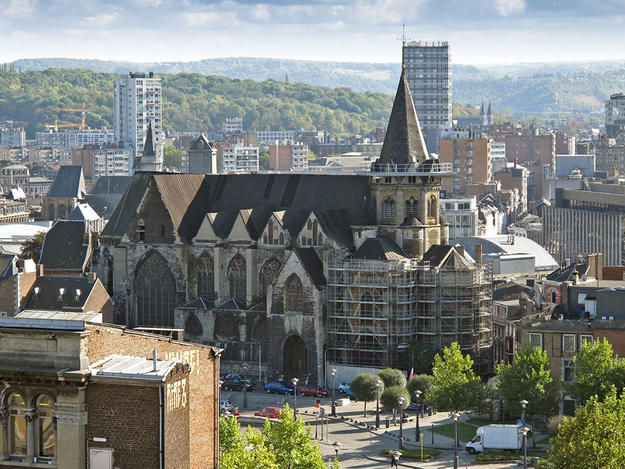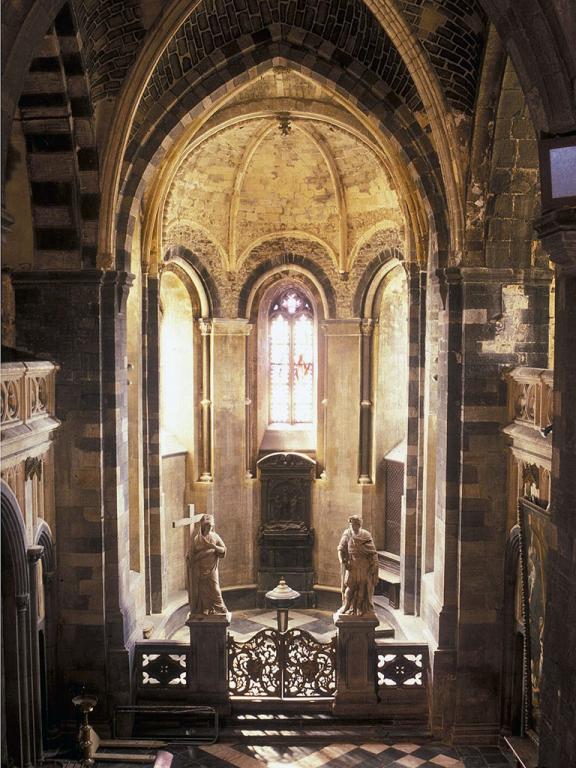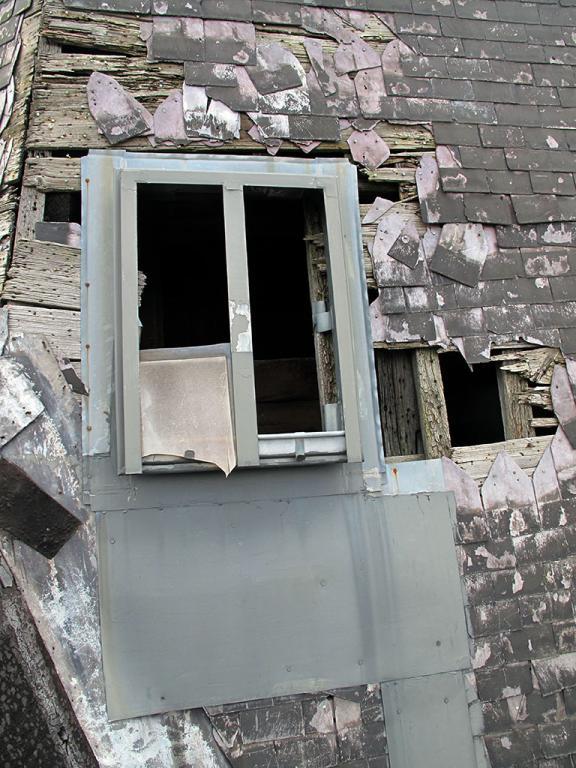Collégiale Sainte-Croix de Liège
2014 World Monuments Watch
The Sainte-Croix church is one of seven collegiate churches in Liège originally constructed between the tenth and eleventh centuries, when the city was the capital of a prince-bishopric and one of the most renowned urban centers of the Holy Roman Empire. The present structure was built in the thirteenth and fourteenth centuries on the foundations of the original church. Its impressive late Romanesque-style octagonal tower is an urban landmark and was intended as a focal point in the religious topography of the city. In contrast, the westbau, or westwork, was conceived in the Gothic style. With its two opposed apses, an eastern choir modeled after Paris’ Sainte-Chapelle, and a three-aisle nave, Sainte-Croix diverged from the traditional architectural plans of the Mosan region and is an example of the Gothic influence in the eastern part of the Holy Roman Empire.
In the 1960s, a neighborhood of houses to the north of the site was demolished along with other surrounding streets to allow for the construction of a road connecting the city center to an outlying highway. This severely altered the historic context of the church and deprived it of its parish. No longer in use, Sainte-Croix suffered from significant deterioration in the decades since it last underwent conservation work in the 1970s. By the time the building was included on the 2014 World Monuments Watch, the masonry was decaying and stones were falling from the building, the roof had failed, and water infiltration was damaging the interior elements. A major collaborative effort was needed in order to rescue this centerpiece of Liège’s history and urban landscape.
Watch Day
Watch Day was held at the Sainte-Croix church in October 2014, to coincide with the opening of an exhibition on the building. The content of the exhibition was developed in a March 2014 workshop about the building’s future that was attended by faculty and students from the universities of Liège, Antwerp, and Hasselt. Conferences, visits, discussions, and teamwork led to the creation of posters and a general report that were then exhibited at the Université de Liège (ULg) Opera Centre from October to December 2014.
Since the Watch
In July 2014 the municipality of Liège initiated a complete technical survey of Sainte-Croix. Two months later the church held its first mass for the feast of the Holy Cross in over six years. In May 2015, the city’s deputy mayor in charge of architectural heritage announced that Sainte-Croix would be the next important historic building to be restored in Liège. In February 2017, the Walloon regional government announced a €15 million, 10-year restoration project for the building, which will become an ecumenical place of worship and cultural center.



